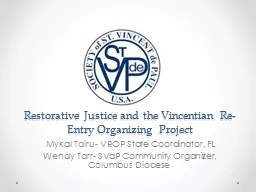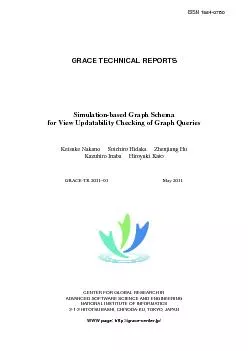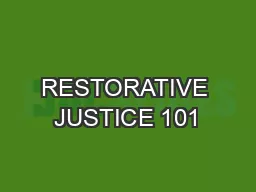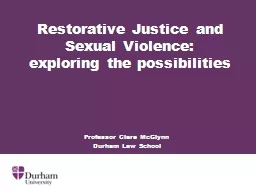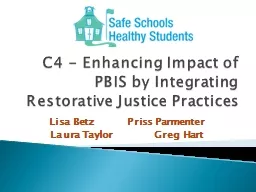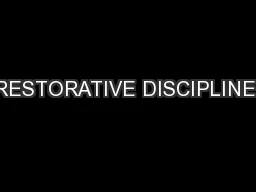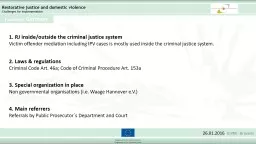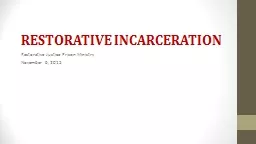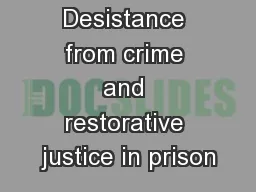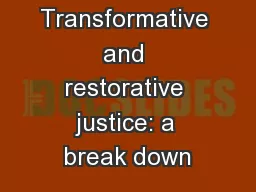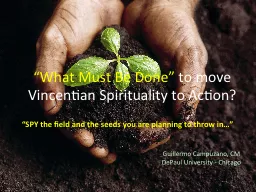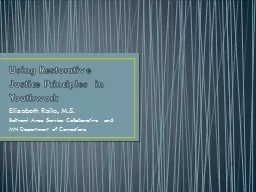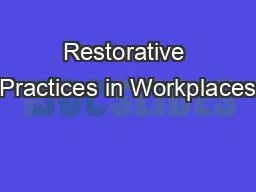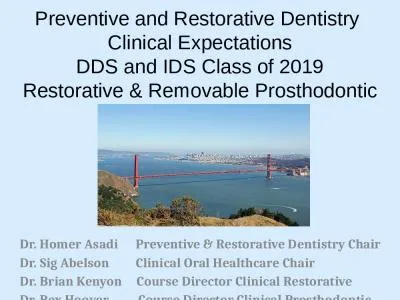PPT-Restorative Justice and the Vincentian Re-Entry Organizing
Author : test | Published Date : 2016-07-28
Mykal Tairu VROP State Coordinator FL Wendy Tarr SVdP Community Organizer Columbus Diocese The Two Feet of Love in Action Charitable Works response to immediate
Presentation Embed Code
Download Presentation
Download Presentation The PPT/PDF document "Restorative Justice and the Vincentian R..." is the property of its rightful owner. Permission is granted to download and print the materials on this website for personal, non-commercial use only, and to display it on your personal computer provided you do not modify the materials and that you retain all copyright notices contained in the materials. By downloading content from our website, you accept the terms of this agreement.
Restorative Justice and the Vincentian Re-Entry Organizing: Transcript
Download Rules Of Document
"Restorative Justice and the Vincentian Re-Entry Organizing"The content belongs to its owner. You may download and print it for personal use, without modification, and keep all copyright notices. By downloading, you agree to these terms.
Related Documents

